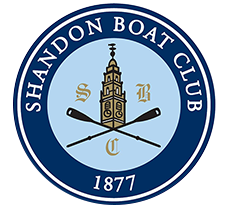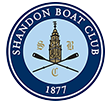Organisation of Rowing in Ireland
Rowing in Ireland is organised by Rowing Ireland and information about all aspects of Irish rowing can be found on their website HERE
Rowing Ireland is a 32 county organisation. There are 70 clubs currently registered with Rowing Ireland (of which 23 are schools or colleges). These clubs row on rivers and lakes throughout the country.
Season
The Irish rowing season runs pretty much all the year around although August tends to be restricted to Masters rowing, including the Shandon Masters Regatta. The general regatta season runs approximately from 1st April to the 30th June followed by the National Championships and International regattas in July. Some end of season regattas are held in September – very suitable for beginners rowing. The Head of the River season commences in October and runs to the end of March.
Competition
A regatta is a rowing race over a set distance which may be run on two lane or multi-lane stretches of water. A head of the river is a time trial in which boats row in sequence over the same stretch of water.
Regattas are run over varying distances depending on the age category of the crews. Under 12 years, under14 and Masters races are limited to 1,000 metres. Under 15 years are limited to 1,500 metres and all other categories are limited to 2,000 metres.
Heads of the river can be of variable lengths typically up to 4,000 metres.
The key competitive event of the year is the National Championships held annually in July on Inniscarra Lake at the National Rowing Centre, Farran Woods, Cork.
The Grand League takes place in April, May and June. This consists of four regattas held on six lane lake courses – Skibbereen Regatta and Cork City Regatta both held on Iniscarra Lake, Dublin Metropolitan Regatta on Blessington Lake, Co. Wicklow and Lough Rynn Regatta on Lough Rynn, Co Leitrim. League points are accumulated over events in all four regattas. Of the approximately 50 clubs competing, Shandon finished 3rd in 2018 and 2nd in 2019. Full information regarding the way the League operates can be found on the RI website HERE
See below for more information on competitive rowing terminology.
Competitive categories are as follows:
Junior – under 18 with the various age categories (J18, J16, J15, J14, J12) referring to the competitor’s age being a year younger on 31st December of the previous year.
Novice – over 18 with less than 3 years rowing and less than a set number of wins.
Intermediate – over 18 with more than a set number of wins as a Novice or a Junior
Senior – over 18 with more than a set number of wins as an Intermediate.
Master – over 27 and graded according to age up to over 75 yrs.
Rowing Positions
Seats in a boat are numbered from the back to the front. The rearmost seat is that of number 1 always called the bow and the foremost seat is that of number 8, 4 or 2 depending on the number of seats in the boat but is always called the stroke.
The seats from bow are numbered 2,3,4,5,6,7 as appropriate. Coxed boats are steered by a cox who is always seated opposite the stroke in an eight and sometimes in a four (stern loader) but usually in a four in the front of the boat behind the bow (bow loader).
The left side of the boat from the rower’s perspective is the bow side and the right side is the stroke side. Thus the sculler will have a bow side and a stroke side oar while the sweep rowers will either be bow-siders (with a bow oar) or stroke-siders (with a stroke oar).
Equipment
The type of rowing Shandon competes in is called Slide Rowing due to the fact that the rower’s seat slides on runners in the boat. There are two basic types of slide boats – sculling boats where the rower uses two oars and sweep boats where the rower uses one two-handed oar.
A boat rowed by a single rower is called a scull. A boat rowed by two rowers each with two (sculling) oars is a double whereas a boat rowed by two rowers each with one (sweep) oar is a pair. A boat rowed by four rowers each with two sculling oars is a quad whereas a boat rowed by four rowers each with one (sweep) oar is a four. Eights are only rowed by sweep rowers except for training beginners where it is referred to as an octuple.
Sculls and pairs/doubles are always coxless while the eight is always steered by a cox. A four/quad may be coxed or coxless. In a coxless boat the rowers steer the boat by applying pressure on one side or other or by a steering mechanism attached to the shoe of one of the rowers.
Oars (or blades) are nowadays always “hatchet” shaped. Sculling blades have smaller one-handed grips (varied for hand size) while sweep blades are larger with wide two-handed grips.
Rowing machines (ergometers or ergs) are the sport’s universally used standard land training equipment.
Types of Crews
Crews are either all male or all female except for the cox who can be either male or female in any crew. Mixed gender crews are allowed in some regattas for very young (eg under 12) crews.
The letter M or W before a category indicates whether the crew is Men or Women respectively. (EG MJ14 refers to a Men’s Junior 14 crew).
A crew can be either a sculling crew or a sweep crew and can be either coxed or non-coxed. (See the Equipment Section above).
A sculling crew is noted by an X after the crew designation. A coxed crew is noted by a + and a non-coxed crew by a – after the designation.
Some Examples
MJ16 4X + = Men’s Junior 16 Sculling Four (“Quad”) with a cox
WJ18 2- = Women’s Junior 18 Sweep Pair with no cox
WJ14 4X+ = Women’s Junior 14 Sculling Four (“Quad”) with a cox
MJ18 4X- = Men’s Junior 18 Sculling Four (“Quad”) with no cox
MJ18 4- = Men’s Junior 18 Sweep Four with no cox
Safety
All club rowers must be confident swimmers.
Parents, and others, often ask why life jackets are not worn by rowers. The reason is that life jackets, no matter how slim, would impede the rowing stroke and would be more likely to cause an unsteady stroke and unbalance the boat. However coxes, who do not row, must always wear a life jacket.
The basic safety drill, in the event of the boat swamping or capsizing, is for the rower to stay with the craft until help arrives. All boats are made of carbon fibre and will remain buoyant under any swamping or capsizing circumstance.

